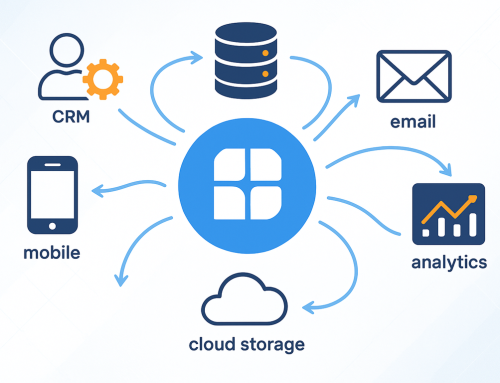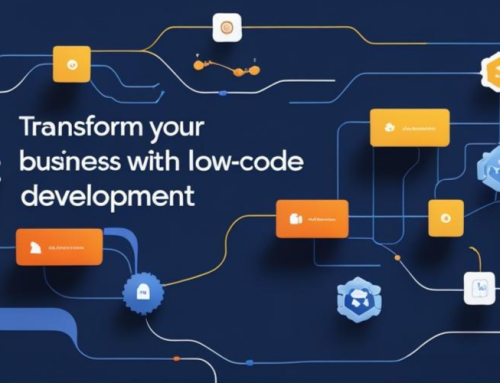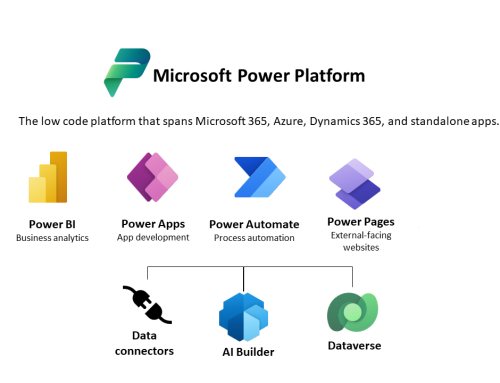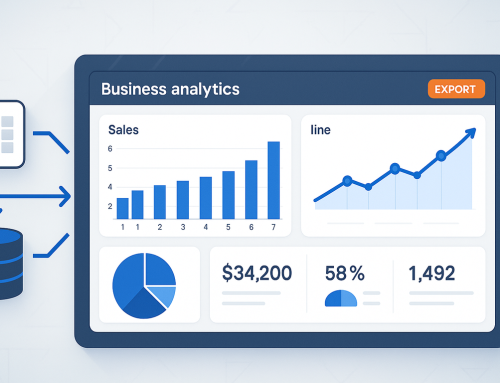The Chat Window Will Be the Death of AI: Why Frictionless Interfaces Are the Future of Intelligence
Executive Summary
The prevailing wisdom positions the chat interface as the primary gateway to Artificial Intelligence. I contend this is a shortsighted view. The future of AI, its true power and adoption, lies not in conversational detours but in frictionless, embedded experiences within the applications we already use. Chat is a transitional step, a rudimentary entry point, but its inherent limitations cap AI’s potential. To unlock genuine enterprise value and broad user adoption, we must look beyond the chat box and champion interfaces that make intelligence an invisible, indispensable part of our digital workflows.
– E.Y.
Introduction
We stand at a fascinating juncture with Artificial Intelligence. Its capabilities are expanding at an almost startling pace, promising to reshape how we work, innovate, and solve complex problems. Yet, the dominant paradigm for interacting with this powerful technology—the chat window—feels increasingly like a bottleneck rather than a conduit. What if the very interface we’ve come to associate with AI is, in fact, limiting its reach and impact?
This isn’t merely an academic debate about UX preferences. It’s a strategic imperative. How we design the human-AI interaction layer will fundamentally determine the velocity of adoption, the depth of integration, and ultimately, the real-world value we derive from these intelligent systems. I believe we’re on the cusp of needing a significant mindset shift: from AI as a distinct, chat-driven destination to AI as a seamlessly woven fabric within our existing digital environments.
Problem Statement
The core problem is this: the current over-reliance on chat interfaces as the default method for AI interaction imposes unnecessary friction, misapplies UX principles, and ultimately hinders the true potential of AI to augment human capability and drive business outcomes. This “chat-first” approach risks relegating AI to a novel but niche tool, rather than the transformative, deeply integrated force it can be. It’s a model that serves initial accessibility but fails the test of long-term, scalable, and truly effective utility.
Analysis
Main Point 1: The Illusion of Chat as the Apex Predator of Interfaces
The central premise is a challenging one: the chat interface, currently the dominant mode of interaction with Artificial Intelligence, is not its ultimate destination. Instead, the future of AI lies in seamlessly integrated experiences.
- Friction vs. Flourishing: My conviction here is partly personal. I prefer dictation to typing; for many, the act of formulating and typing queries is inherently frictional. Art might thrive on restriction, but AI, designed to augment us, flourishes in frictionless environments. The less cognitive load an interface demands for a specific task, the more effective the AI becomes as an augmentation tool. The rise of multimodal AI tools, capable of generating and understanding text, images, video, and audio, already points to an industry expanding beyond purely text-based chat [2]. This isn’t about laziness; it’s about efficiency and impact.
- The Misapplication of “Friction”: In marketing, we sometimes use “intentional friction” to build relationships, to qualify leads, to allow for mutual alignment. This makes sense when the goal is to define a relationship. But AI is a tool. Its purpose isn’t to build a personal relationship with you; it’s to deliver utility. What builds brand identity in marketing actually breaks momentum and usability in AI. For AI, frictionless interaction is essential for effectiveness.
- Challenging Chat’s Primacy: Why did chat become the default? Largely because it was one of the first, most accessible ways to demonstrate the power of new Large Language Models. It’s a developer-friendly shortcut, often perceived as familiar by users. But decades of UX research have gone into honing application interfaces. To discard this knowledge in favor of chat for every AI interaction is a strategic misstep. True ROI will come from frictionless integration into existing applications, not from contriving standalone use cases that then require a chat interface. It’s important to note that while chat’s accessibility has driven early market growth and cost savings [1], this initial adoption phase shouldn’t be mistaken for long-term optimal design.
Main Point 2: The Human and Strategic Cost of Interface Myopia
The insistence on chat as the primary AI interface isn’t just a design quibble; it has tangible costs, both for those building AI solutions and those intended to benefit from them.
- The Human Cost:
- Builders and Innovators: Entrepreneurs and developers can find their vision unnecessarily constrained if they believe chat is the only, or even primary, delivery mechanism. This leads to missed opportunities for more intuitive, powerful, and context-aware applications.
- End Users: More critically, the everyday user’s ability to learn, embrace, and truly benefit from AI is severely hampered. If users are only trained to see AI through a chat window, or if companies only offer AI in this flavor, adoption will falter. This directly undermines the vision of a “human plus AI” hybrid, where technology seamlessly augments our capabilities. If the interface is a barrier, the integration—and the augmentation—fails.
- Agent Evolution Demands More: AI is rapidly moving beyond simple question-answer turns. We’re seeing the emergence of sophisticated “agents” capable of performing complex, multi-step tasks autonomously, even collaborating with other agents. Trying to manage this complexity through a chat window is like trying to conduct an orchestra with a single drum. It’s a fundamental mismatch of interface to capability, an unnecessary barrier.
- The High Cost of Ignoring Interface Reality:
- For Developers and Entrepreneurs: Persisting with chat-centric design risks creating shallow, mediocre integrations—often just “API wrappers” that offer little novel value. This diminishes not only their business opportunity but also the user’s experience and perception of AI’s utility.
- For End Users and Enterprises: The consequence is unnecessary resistance and friction. People who could genuinely benefit will ignore AI if it feels like extra work. In enterprise settings, this translates directly to failed adoption, underutilized AI programs, and wasted investment. People naturally take the path of least friction. If AI isn’t on that path, it will be bypassed.
Main Point 3: Beyond Proximity: The Imperative for True Integration and Proactive Intelligence
There’s a pervasive misunderstanding of what “good” AI integration looks like, often fueled by the “Copilot myth.”
- The “Copilot Myth” and True Integration: Many believe a better AI experience simply means having a chat interface closer to where work is done—a sidebar in an application, for instance. Users who started by copying text from a standalone ChatGPT window and pasting it elsewhere might perceive this as an improvement. However, true integration isn’t about proximity; it’s about embedding intelligence directly into the workflow. The goal isn’t a more convenient chat, but an experience where the AI is so deeply woven into the application that the need to “chat” with it diminishes or disappears entirely. We’ve mistaken accessibility for optimization—and it’s holding us back.
- Proactive Intelligence, Not Reactive Queries: Current chat-based integrations often place the entire onus on the user to identify their problem, articulate it perfectly, and then ask for help. Consider a cloud platform with a chat window for budget queries. The system already has the user’s data. It knows common budgetary pitfalls. It can see when errors are occurring or when spending is approaching a threshold. Why should the user have to ask? True intelligence is proactive. It should alert the user, offer insights, or even take corrective action before the user even realizes they have a question. The right interface doesn’t ask for input—it removes the need for it. This is where the real value lies: in AI using its access to data to anticipate needs, not just react to prompts.
- Lessons from the Field (Power Virtual Agents vs. Power Apps): My own experience underscores this. I’ve seen organizations heavily reliant on chatbots (like Power Virtual Agents, now Copilot Studio) for enterprise services witness a massive surge in demand and utility when introduced to native application interfaces (like Power Apps). Users didn’t just want to “talk” to a service; they wanted to do work more effectively through well-designed interfaces tailored to the task. This isn’t an isolated observation; it’s a pattern. Once a key decision-maker sours on AI due to clunky, chat-first experiences perceived as “all hype,” the opportunity can be lost for the entire organization.
Main Point 4: Reframing AI’s Role: The Helper, Not the Destination
A fundamental misunderstanding often drives chat-centric design: the idea that AI itself is the destination, the thing users are trying to reach. This is a mischaracterization of AI’s role.
- AI is the Helper: AI is the tool, the enabler, the vehicle to get users to their desired outcome more efficiently and effectively. The interface should reflect this. It should be subservient to the user’s task, not demand that the user adapt to its conversational quirks.
- Chat Interfaces: A Shortcut, Not a Strategy: Chat became the default not because it was the optimal UX, but because it was a relatively straightforward way to expose the power of large language models. It’s often a developer-friendly shortcut that doesn’t translate to a user-first experience. Ironically, it can even be a developer-limiting experience. Instead of embedding AI into existing, robust, and scalable applications they own, developers might find themselves building standalone chat applications, increasing complexity and time-to-value. True strategic integration is likely cheaper and less risky, as AI becomes a feature enhancement within a stable environment, rather than an entirely new, potentially fragile, application. This isn’t just about a better user experience; it’s a better developer and enterprise experience.
- The Human + AI Synergy at Risk: My core belief is that “a person plus a robot will always be better than just each of those things by themselves.” If AI interfaces are cumbersome, organizations might wrongly conclude that “human + robot is not as good as just the robot,” leading to a dangerous push for full automation where human oversight, logic, and understanding are critically needed. This not only creates risk but also diminishes the potential for truly augmented outcomes. Conversely, if users reject AI due to poor interfaces, they remain overworked, burdened by tasks that AI could alleviate.
Fundamentally, this is a leadership challenge. We need to guide our teams to think beyond the immediate and obvious. – Elijah Young
Recommendations
To move beyond the limitations of chat and unlock AI’s true potential, I propose the following strategic shifts:
- Prioritize Frictionless Integration Over Standalone Chat: Shift the primary design focus from “How can we build a chatbot for this?” to “How can AI be invisibly embedded to enhance this existing workflow or application?”
- Invest in Deep UX Research for AI-Powered Features: Don’t assume chat is the answer. Apply rigorous UX research methodologies to understand user needs, context, and tasks before deciding on an interface. Explore task-specific UIs, ambient intelligence, and proactive assistance.
- Champion Proactive Intelligence: Encourage development of AI systems that anticipate user needs and offer timely, contextual assistance, rather than passively waiting for queries. This requires a deep understanding of user workflows and data.
- Educate Stakeholders on Diverse AI Interaction Models: Broaden the organizational understanding of what an “AI interface” can be. Showcase examples of deeply embedded AI, context-aware assistance, and non-chat modalities.
- Measure Success by Task Completion and User Enablement: Shift metrics away from chat session counts or query numbers towards how effectively AI helps users achieve their goals, reduce effort, and make better decisions.
Implementation Plan
Adopting a frictionless, integration-first approach to AI requires a deliberate, phased strategy:
- Phase 1: Audit and Identify High-Impact Opportunities (1-3 Months)
- Action: Conduct thorough audits of existing enterprise applications and critical user workflows.
- Goal: Identify 3-5 key processes or tasks where embedded AI could deliver significant improvements in efficiency, decision quality, or user experience without relying on a chat interface.
- Consider: Where are the current points of friction that AI could alleviate proactively?
- Phase 2: Pilot Small-Scale, Deeply Integrated AI Features (3-6 Months)
- Action: Select one or two high-impact opportunities from Phase 1. Develop and deploy AI features that are deeply embedded within the existing application interface.
- Example: Instead of a budget chatbot, an AI feature that proactively flags budget anomalies directly within the financial reporting dashboard.
- Focus: Seamlessness and task relevance.
- Phase 3: Foster Cross-Functional “Frictionless AI” Teams (Ongoing)
- Action: Create dedicated or virtual teams comprising UX designers, AI/ML engineers, product managers, and domain experts.
- Mandate: To specifically explore and implement non-chat AI solutions. Equip them with the autonomy to challenge conventional chat-based approaches.
- Phase 4: Develop and Evangelize New AI Interaction Patterns (6-12 Months)
- Action: Based on successful pilots, begin to codify new interaction patterns for embedded AI within your organization.
- Goal: Create a library of best practices and reusable components for frictionless AI features. Evangelize these successes internally.
- Phase 5: Iterate, Measure, and Scale (Ongoing)
- Action: Continuously gather user feedback on new integrated AI features. Measure success based on task completion rates, time saved, error reduction, and user satisfaction—not chat engagement.
- Goal: Iteratively refine and scale successful frictionless AI integrations across the enterprise.
Remember, the objective is to make AI an enhancement to how work gets done, not an additional task.
Conclusion
The chat window, for all its initial utility in democratizing access to AI, is ultimately a stepping stone. It has served a purpose in introducing us to the potential of conversational intelligence, but it is not the bedrock upon which enduring, high-value AI experiences will be built.
The future of AI lies in its seamless, almost invisible integration into the tools and workflows we use every day. It’s about proactive assistance, contextual intelligence, and interfaces so intuitive they fade into the background, allowing human capability to take center stage, powerfully augmented. This requires us to challenge our assumptions, invest in thoughtful design, and prioritize true utility over superficial novelty. The enterprises and leaders who grasp this will be the ones who truly harness the transformative power of artificial intelligence.
What’s the real business driver here? It’s moving from AI as a curiosity to AI as a core component of operational excellence and strategic advantage. How does this align with our core values and bottom line? By empowering our people and optimizing our processes. Consider the implications if we don’t evolve beyond chat: untapped potential, frustrated users, and ceding ground to those who embrace a more integrated vision.
My final question to you is this:
“What does your interface say about how you define intelligence?”
– Elijah Young














